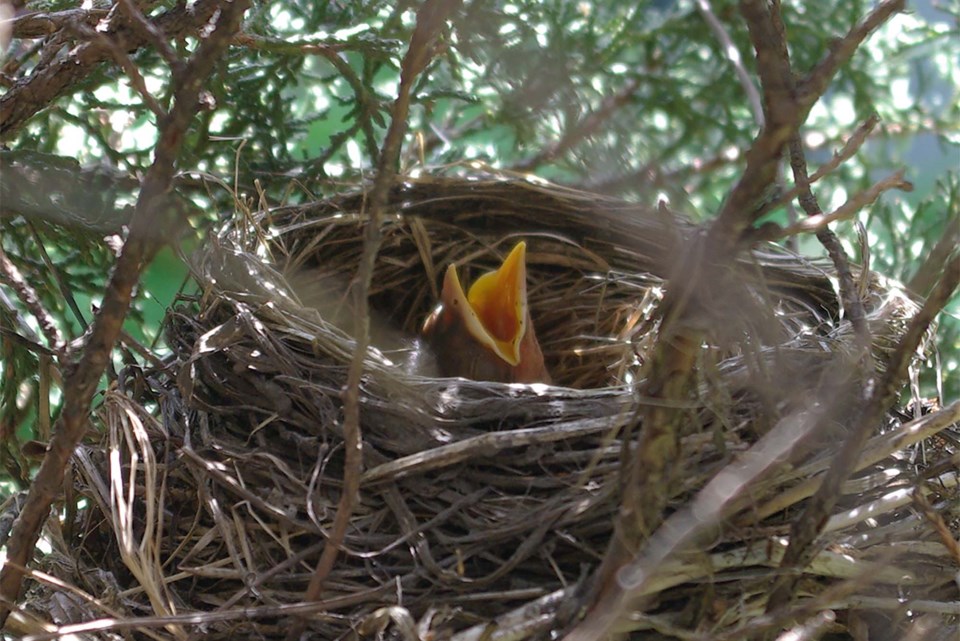New research suggests some North American birds are nesting and laying eggs almost a month earlier now than they did 140 years ago due in part to global heating.
John Bates, curator of birds at the Field Museum in Chicago, Illinois, co-authored a study in the Journal of Animal Ecology last week on how climate change affects bird egg-laying dates.
Studies have found that spring melt, plant flowering, and bird migration dates have all advanced in recent years due to warmer spring temperatures caused by global heating, the paper noted. Some studies of bird nesting dates and climate warming have had conflicting results, perhaps because they were over short, 25-year time spans.
Bates said he and his team decided to do a bigger study on egg-laying times to make use of the Field Museum’s massive egg collection, which includes some 500,000 specimens from 600 species dating back to the 1800s, and more recent nest surveys they did as part of other research.
The team examined nest records from 72 Illinois bird species collected between 1872 and 2015 and used a combination of recorded observations and a rule of thumb (birds typically lay one egg a day, so you can find when the first egg in a nest is laid by subtracting one day per egg from the date the nest is collected) to determine laying dates. They used CO2 concentrations as a proxy for temperature as Illinois didn’t have temperature records before 1910.
Springing ahead
The team found that first-egg-laid dates for the 72 species advanced about 10 days in the last 143 years. Birds which are resident to Chicago advanced 15 days, short-ranged migrants moved up 18, and long-range ones advanced 16.
The team found that 33 per cent (24) of the species showed a statistically significant advance in lay dates, with birds laying eggs about 25 days earlier now than they did in 1872. Red-winged blackbirds laid eggs about 11 days earlier, yellow warblers moved up 23, and American Kestrels advanced 50.
The study found changes in CO2 concentrations (temperatures) largely correlated with the changes in lay dates, which made sense, as warming affects emergence dates for the fruits and insects birds need to feed their chicks, Bates said. But because so many birds in this study didn’t change their laying dates, Bates said there must be other factors at work here which influenced nesting dates.
Bate's team also got an oddball result with robins, which were the only birds in the study whose laying date actually retreated, with the birds laying eggs 14 days later on average now than they did in the late 1800s.
“Robins are a really curious bird,” Bates said of this result, which his team believes warrants more study.
Bates said a major 2019 study on North American birds found robins were one of the few species that had become more numerous here since the 1970s, suggesting they might have certain traits which help them cope with changing climates.
Extinction risks?
Birds tend to time their egg-laying so they have plenty of food available for their chicks when they hatch, said St. Albert birder Alan Hingston, who read Bates’s study. Climate warming pushes first bloom and first insect dates earlier in the year, affecting when food is available and possibly pushing up first egg dates.
“The trigger for bird migration is day length,” Hingston said, the cycle for which is more or less fixed for Earth.
Hingston said this limits the ability of migratory birds to change their egg-laying dates, which could put them out of sync with their food supply if warming trends continue.
Bates noted how that aforementioned 2019 study found that North America had lost some three billion birds since 1970, with climate change suspected as a contributing cause. Climate change is also predicted to cause more extreme weather.
“If that manifests itself in terms of more early spring adverse weather events, and a whole suite of birds is trying to nest at earlier times, that could mean more nesting failures, which could lead to population declines," Bates said.
In a press release, Bates said this study acts as a warning on climate change and shows the value of museum egg collections.
“They’re a treasure trove of data about the past, and they can help us answer important questions about our world today.”
The study is available at bit.ly/383iJaI.



